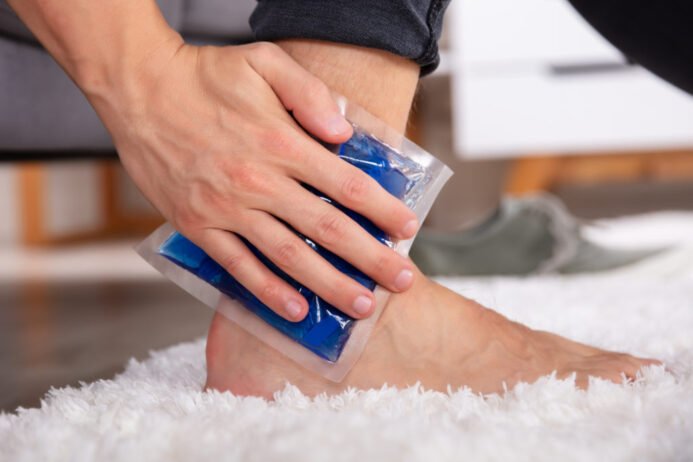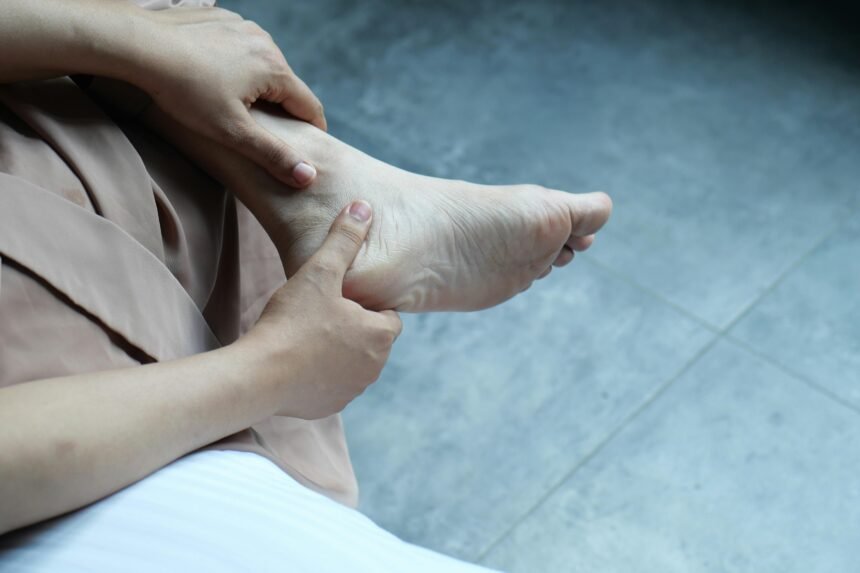Plantar fasciitis is a common condition causing heel pain, often described as a sharp or stabbing sensation, especially during the first steps in the morning or after prolonged periods of rest. It occurs when the plantar fascia, a thick band of tissue running along the bottom of your foot, becomes inflamed or irritated. While medical treatments like physical therapy or orthotics can help, many people successfully manage plantar fasciitis at home using simple, effective home remedies. Below, we explore detailed strategies to alleviate pain, promote healing, and prevent recurrence using accessible methods.
Understanding Plantar Fasciitis
Before diving into remedies, it’s helpful to understand the condition. Plantar fasciitis is often caused by repetitive strain or overuse, commonly affecting runners, people who stand for long periods, or those with improper footwear. Risk factors include tight calf muscles, high arches, flat feet, or sudden increases in activity. Symptoms typically include heel pain, stiffness, or discomfort that worsens with activity or after rest.
The goal of home remedies is to reduce inflammation, relieve pain, and support the healing of the plantar fascia. Consistency and patience are key, as recovery can take weeks to months. Always consult a healthcare professional if symptoms persist or worsen.
Effective Home Remedies for Plantar Fasciitis
1. Rest and Activity Modification


Rest is crucial to allow the inflamed plantar fascia to heal. Avoid high-impact activities like running or jumping, which can exacerbate the condition. Instead, opt for low-impact exercises like swimming or cycling to maintain fitness without stressing the foot.
- How to do it: Reduce time spent on your feet, especially on hard surfaces. Take breaks during standing or walking tasks. If you must stand for long periods, use cushioned mats or supportive shoes to reduce strain.
- Tip: Gradually reintroduce activities once pain subsides to avoid re-injury.
2. Ice Therapy


Applying ice to the affected area can reduce inflammation and numb pain. This is particularly effective after activity or at the end of the day.
- How to do it: Place a cold pack or a bag of frozen peas wrapped in a thin towel on the heel and arch for 15-20 minutes, 2-3 times daily. Alternatively, freeze a water bottle and roll it under your foot for a combined massage and cold therapy effect.
- Tip: Avoid direct ice contact with skin to prevent frostbite.
3. Stretching Exercises
Tight calf muscles and Achilles tendons can contribute to plantar fasciitis. Regular stretching can improve flexibility, reduce tension, and promote healing.
- Calf Stretch:
- Stand facing a wall with one foot forward and the other back, keeping both feet flat.
- Lean forward, bending the front knee while keeping the back leg straight and heel on the ground.
- Hold for 30 seconds, then switch sides. Repeat 2-3 times per side, twice daily.
- Plantar Fascia Stretch:
- Sit down and cross one leg over the other.
- Pull your toes back toward your shin, stretching the arch of your foot.
- Hold for 15-30 seconds, repeat 2-3 times per foot, 2-3 times daily.
- Tip: Perform stretches gently to avoid aggravating the condition.


4. Foot Massage
Massaging the plantar fascia can improve blood flow, reduce tension, and alleviate pain. You can use your hands or a tool like a tennis ball or golf ball.
- How to do it: Sit comfortably and roll a tennis ball or golf ball under your foot, focusing on the arch and heel. Apply gentle pressure for 5-10 minutes daily. For added relief, try this after icing.
- Tip: Use a warmed or cooled ball for additional comfort.
5. Proper Footwear and Arch Support
Wearing supportive shoes with good arch support and cushioning is essential to reduce strain on the plantar fascia. Avoid flat shoes, flip-flops, or worn-out footwear.
- How to do it: Choose shoes with a low to moderate heel, good arch support, and a cushioned sole. Consider over-the-counter orthotic inserts or heel cups for extra support.
- Tip: Replace shoes every 300-500 miles of use or when they show signs of wear.
6. Night Splints
Night splints keep the plantar fascia and Achilles tendon stretched overnight, preventing morning stiffness and pain.
- How to do it: Wear a night splint (available online or at pharmacies) that holds your foot at a 90-degree angle to your leg while you sleep. Use consistently for 1-3 months.
- Tip: Start with shorter durations to adjust to the splint’s feel.
7. Epsom Salt Soak
Soaking your feet in warm water with Epsom salt can relax muscles, reduce inflammation, and ease pain.
- How to do it: Fill a basin with warm water and add 1-2 tablespoons of Epsom salt. Soak your feet for 15-20 minutes, 1-2 times daily.
- Tip: Dry your feet thoroughly afterward to prevent skin irritation.
8. Anti-Inflammatory Diet and Supplements
Reducing systemic inflammation through diet may support healing. Foods rich in omega-3 fatty acids, antioxidants, and anti-inflammatory compounds can help.
- How to do it: Include foods like fatty fish (salmon, mackerel), nuts, berries, leafy greens, and turmeric in your diet. Stay hydrated and limit processed foods, sugar, and alcohol.
- Supplements: Consider turmeric or ginger supplements, but consult a doctor first, especially if you’re on medications.
- Tip: Pair dietary changes with other remedies for best results.
9. Taping
Athletic taping can provide temporary support to the plantar fascia, reducing strain during movement.
- How to do it: Use kinesiology tape or athletic tape to support the arch. Apply strips along the bottom of the foot from the heel to the ball, following online tutorials for proper technique. Reapply every 1-2 days.
- Tip: Ensure skin is clean and dry before taping to avoid irritation.
10. Over-the-Counter Pain Relief
While not a “natural” remedy, over-the-counter nonsteroidal anti-inflammatory drugs (NSAIDs) like ibuprofen can reduce pain and inflammation.
- How to do it: Take as directed on the package, typically 200-400 mg every 4-6 hours as needed, with food to avoid stomach upset. Use for short-term relief only.
- Tip: Consult a doctor if you need NSAIDs for more than a few weeks or have underlying health conditions.
Lifestyle Tips to Prevent Recurrence
- Maintain a Healthy Weight: Excess weight increases pressure on the plantar fascia. A balanced diet and regular low-impact exercise can help.
- Warm-Up Before Exercise: Always stretch and warm up before physical activity to prevent strain.
- Gradual Activity Increase: Avoid sudden increases in activity intensity or duration.
- Regular Foot Care: Continue stretching and wearing supportive footwear even after symptoms improve.
When to Seek Professional Help
While home remedies are effective for many, consult a doctor or podiatrist if:
- Pain persists beyond a few weeks despite consistent home treatment.
- Symptoms worsen or interfere with daily activities.
- You experience numbness, tingling, or swelling in the foot.
A professional may recommend physical therapy, custom orthotics, corticosteroid injections, or, in rare cases, surgery.
Conclusion
Treating plantar fasciitis at home is possible with a combination of rest, stretching, proper footwear, and other natural remedies. By addressing inflammation, supporting the foot, and making lifestyle adjustments, you can reduce pain and promote healing. Consistency is key—stick to these remedies daily and give your body time to recover. If symptoms don’t improve, seek professional guidance to prevent long-term complications.


